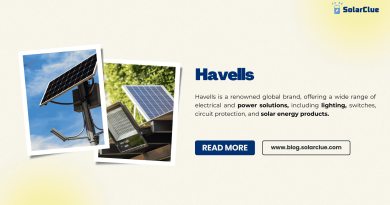How Do Solar Panels Conserve Energy?
Solar panels are a powerful tool for reducing energy consumption and lowering electricity bills. By generating clean, renewable energy from sunlight, they help reduce reliance on the grid and contribute to significant long-term savings. This comprehensive guide will explain how solar panels save energy, the concept of net metering, and the various factors that maximize savings for homeowners.
Table of Contents
- 1 How Solar Panels Generate Electricity and Reduce Grid Dependency
- 2 The Concept of Net Metering and Its Benefits
- 3 Calculating Potential Electricity Bill Savings
- 4 The Impact of Time-of-Use Electricity Rates on Solar Savings
- 5 Government Incentives and Rebates for Solar Power
- 6 Long-Term Cost Savings with Solar Panels
- 7 The Environmental Benefits of Reducing Energy Consumption
- 8 Common Misconceptions About Solar Energy and Energy Savings
- 9 The Future of Solar Power and Its Impact on Energy Consumption
- 10 Table: Comparison of Solar Panel Savings Scenarios
- 11 FAQ Section
- 12 Conclusion
How Solar Panels Generate Electricity and Reduce Grid Dependency
1. The Photovoltaic Effect
- How It Works: Solar panels convert sunlight into electricity through the photovoltaic effect. When sunlight hits the solar cells, it excites electrons, creating an electric current. This direct current (DC) electricity is then converted to alternating current (AC) by an inverter for use in homes.
- Energy Production: Solar panels generate electricity whenever the sun is shining, reducing the amount of electricity that needs to be purchased from the grid.
2. Reducing Grid Dependency
- Self-Consumption: By generating their own electricity, homeowners can significantly reduce their dependency on the grid. The more energy a household consumes directly from its solar panels, the less it needs to draw from the grid.
- Energy Independence: In areas with frequent power outages or unreliable grid connections, solar panels paired with battery storage can provide greater energy independence.
The Concept of Net Metering and Its Benefits
1. What Is Net Metering?
- Definition: Net metering is a billing arrangement that allows homeowners to receive credit for excess solar energy that they export to the grid. When solar panels generate more electricity than a home needs, the surplus is sent to the grid, and the homeowner is credited for this energy.
- Offsetting Consumption: These credits can be used to offset electricity consumption during times when the solar panels are not generating enough power, such as at night or during cloudy days.
2. Benefits of Net Metering
- Lower Electricity Bills: Net metering helps reduce electricity bills by allowing homeowners to use the grid as a “virtual battery,” storing their excess energy as credits for later use.
- Maximizing Solar Savings: With net metering, homeowners can maximize their savings by ensuring that none of the energy produced by their solar panels goes to waste.
- Encouraging Solar Adoption: Net metering makes solar power more financially attractive, encouraging more homeowners to invest in solar energy.
Calculating Potential Electricity Bill Savings
1. Understanding Your Energy Usage
- Energy Consumption: To calculate potential savings, start by understanding your household’s average energy consumption, typically measured in kilowatt-hours (kWh).
- Solar Production: Estimate the amount of electricity your solar panels will generate based on their size, efficiency, and local sunlight conditions.
2. Bill Savings Calculation
- Solar Offset: Calculate the percentage of your total electricity usage that can be offset by solar power. For example, if your panels generate 80% of your household’s energy needs, you’ll only need to purchase the remaining 20% from the grid.
- Net Metering Credits: Factor in net metering credits for the excess energy your solar panels send to the grid, further reducing your electricity bill.
3. Example Calculation
- Scenario: A household consumes 900 kWh per month. A 5 kW solar panel system generates 750 kWh per month.
- Savings: The solar system offsets 750 kWh of the 900 kWh monthly consumption, reducing the grid usage to 150 kWh. If net metering is available, any surplus generated on sunny days can further offset future consumption.
The Impact of Time-of-Use Electricity Rates on Solar Savings
1. What Are Time-of-Use (TOU) Rates?
- TOU Rates: Some utilities charge different rates for electricity depending on the time of day, with higher rates during peak demand periods (e.g., late afternoon and early evening) and lower rates during off-peak times.
- Solar Compatibility: Solar panels produce the most electricity during the day, which can align with TOU rate schedules, reducing the need to purchase electricity at higher peak rates.
2. Maximizing Savings with TOU Rates
- Strategic Energy Use: Homeowners can maximize savings by shifting energy-intensive activities, such as running appliances, to times when solar production is high and TOU rates are low.
- Battery Storage: Pairing solar panels with a battery system allows homeowners to store excess energy generated during off-peak times and use it during peak periods, further reducing electricity costs.
Government Incentives and Rebates for Solar Power
1. Federal and State Incentives
- Investment Tax Credit (ITC): In the U.S., the federal ITC allows homeowners to deduct a percentage of the cost of installing a solar energy system from their federal taxes. This credit applies to both residential and commercial systems.
- State Rebates: Many states offer additional incentives, including rebates, tax credits, and grants, to reduce the upfront cost of solar panel installation.
2. Net Metering Policies
- State-Specific: Net metering policies vary by state, with some offering full retail credit for excess solar energy and others offering reduced rates or no net metering at all.
- Impact on Payback Period: Generous net metering policies can significantly shorten the payback period for a solar investment.
3. Local Utility Programs
- Solar Rebates: Some utilities offer rebates for solar installations, further reducing the cost.
- Performance-Based Incentives: These incentives pay homeowners based on the amount of electricity their solar panels generate, providing ongoing financial benefits.
Long-Term Cost Savings with Solar Panels
1. Payback Period
- Initial Investment: The payback period is the time it takes for the savings generated by a solar panel system to equal the initial investment cost. Typical payback periods range from 5 to 10 years, depending on system size, location, and available incentives.
- Lifetime Savings: After the payback period, the electricity generated by the solar panels is essentially free, leading to significant long-term savings.
2. Rising Energy Costs
- Hedging Against Inflation: As electricity rates continue to rise, the savings from solar panels will grow, providing protection against future energy cost increases.
- Increased Property Value: Homes with solar panels typically sell for more than comparable homes without them, adding another layer of financial benefit.
The Environmental Benefits of Reducing Energy Consumption
1. Reducing Carbon Footprint
- Clean Energy: Solar panels generate electricity without producing greenhouse gases, reducing the carbon footprint of your household.
- Offsetting Fossil Fuels: By generating renewable energy, solar panels reduce the demand for electricity generated from fossil fuels, helping to combat climate change.
2. Conserving Resources
- Less Water Usage: Unlike traditional power plants, which often require large amounts of water for cooling, solar panels do not use water to generate electricity.
- Reducing Air and Water Pollution: Solar energy production does not emit harmful pollutants, contributing to cleaner air and water.
3. Promoting Sustainable Energy Practices
- Energy Independence: Solar power supports energy independence by reducing reliance on imported fossil fuels and centralized power generation.
- Community Impact: Widespread adoption of solar power can drive local job creation and support the growth of a sustainable energy industry.
Common Misconceptions About Solar Energy and Energy Savings
1. Myth: Solar Panels Are Too Expensive
- Reality: While the initial cost of solar panels can be high, government incentives, rebates, and financing options make solar power more affordable. The long-term savings often outweigh the upfront investment.
2. Myth: Solar Panels Don’t Work in Cloudy or Cold Climates
- Reality: Solar panels can still generate electricity in cloudy or cold climates, although at reduced efficiency. Modern solar panels are designed to perform well in various weather conditions.
3. Myth: Solar Panels Require a Lot of Maintenance
- Reality: Solar panels require minimal maintenance, primarily occasional cleaning and annual inspections. Most systems are designed to last 25 years or more with little intervention.
4. Myth: Solar Energy Isn’t Reliable
- Reality: With advances in battery storage and grid integration, solar energy has become increasingly reliable. Solar panels paired with battery systems can provide consistent power even during outages.
The Future of Solar Power and Its Impact on Energy Consumption
1. Technological Advancements
- Increased Efficiency: Ongoing research and development are leading to more efficient solar panels, allowing homeowners to generate more electricity from the same amount of sunlight.
- Integrated Systems: The future of solar power includes integrated systems that combine solar panels, battery storage, and smart home technology to optimize energy use and savings.
2. Wider Adoption
- Decreasing Costs: As solar technology continues to advance, the cost of solar panels is expected to decline, making them accessible to more households.
- Global Impact: Widespread adoption of solar power has the potential to significantly reduce global energy consumption, lower greenhouse gas emissions, and combat climate change.
3. Solar Energy as a Mainstream Power Source
- Grid Integration: As solar power becomes more prevalent, its integration into the grid will improve, leading to more stable and resilient energy systems.
- Policy Support: Government policies and international agreements will continue to support the growth of solar power, driving its adoption and reducing energy consumption on a global scale.
Table: Comparison of Solar Panel Savings Scenarios
| Scenario | Average Energy Consumption (kWh/Month) | Solar Panel Size (kW) | Net Metering Available | Estimated Monthly Savings | Payback Period (Years) |
|---|---|---|---|---|---|
| Urban Home, High Consumption | 1000 kWh | 6 kW | Yes | ₹3,500 – ₹4,500 | 6 – 8 |
| Suburban Home, Moderate Consumption | 800 kWh | 4 kW | Yes | ₹2,800 – ₹3,500 | 5 – 7 |
| Rural Home, Low Consumption | 500 kWh | 3 kW | No | ₹1,800 – ₹2,200 | 7 – 9 |
| Off-Grid Cabin, Low Consumption | 300 kWh | 2 kW + Battery | N/A | ₹2,000 – ₹2,500 | 8 – 10 |
FAQ Section
- How much can I save on my electricity bill with solar panels?
- The amount you save depends on factors such as your location, energy consumption, solar system size, and available incentives. On average, solar panels can reduce electricity bills by 50% to 90%.
- What is net metering, and how does it work?
- Net metering allows homeowners to earn credits for excess solar energy sent back to the grid. These credits can be used to offset electricity consumption during times when the solar panels are not generating enough power.
- How long does it take to see a return on investment with solar panels?
- The payback period for solar panels typically ranges from 5 to 10 years, depending on the cost of the system, available incentives, and the amount of electricity savings.
- Do solar panels work in cloudy or cold weather?
- Yes, solar panels can generate electricity in cloudy or cold weather, though their efficiency may be reduced. Modern panels are designed to work in a variety of environmental conditions.
- Are there government incentives for installing solar panels?
- Yes, many governments offer incentives such as tax credits, rebates, and grants to encourage the adoption of solar energy. These incentives can significantly reduce the cost of installation.
Conclusion
Solar panels are a powerful tool for reducing energy consumption and lowering electricity bills. Through net metering, government incentives, and advances in technology, solar energy offers significant long-term savings and environmental benefits. As solar power continues to grow, it plays an increasingly vital role in reducing reliance on the grid, promoting energy independence, and contributing to a sustainable future.


